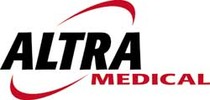 Loading... Please wait...
Loading... Please wait...- 727-541-5900
- My Account
Currency Displayed in
- Home
- Resource Center
- AED Best Practices
- Orlando Utilities Commission's AED Best Practice
Orlando Utilities Commission's AED Best Practice
Orlando Utilities Commission's AED Best Practice
Leadership and Teamwork Key Aspects of Emergency Response Plan
by Monica Krizen
|
It’s 9:00 a.m. on a Monday. In the middle of your weekly meeting, your co-worker says they feel lightheaded and suddenly faints. They are unresponsive and losing color. At 9:01 am the Emergency Response Team (ERT) is alerted. What do you do? Orlando Utilities Commission (OUC) poses similar questions to their ERT members, consisting of over 80 employees, as part of their semi-annual emergency response training drills. Quick drills like these, which include photographs of first aid kits and AEDs, allow employees to become more familiar with equipment and procedures. Even with an emergency response plan in place, OUC wanted to enhance their program.
Earlier this year, OUC’s Safety and Training department invited their employees to a meeting where Senior Safety Coordinator, Bill Sturgeon, asked the group, “What can we do to improve the team?” Safety and Training management recognized the value of their employees’ ideas and experience; they wanted to be involved, work together, and feel comfortable in their knowledge. OUC found leadership and team building are imperative to ensuring the success of procedures and protocols. Using this information, they began implementing procedures suggested and designing new procedures based on ideas and concerns from the meeting:
|
These changes provide ERT members with confidence in the use of the equipment through scenarios and education. Since ERT members are more visible and alerted when an emergency occurs, they are able to quickly arrive at the scene. In an emergency situation, it is important to be able to designate and distribute responsibility to other team members. Having these protocols in place provide ERT members the emergency plan necessary to increase the chance of survival for the victim. In the event of sudden cardiac arrest, “Our goal is to get the AED to the emergency within three minutes so that the shock can be delivered within the critical drop to shock timeframe,” said Sturgeon. He encourages employees, “If you see an AED, bring it with you.” When time is essential, even a seemingly small change, like the badge color of ERT members, can make a difference.
Quick reference guide on back of ERT badges It took several months for OUC to implement all of the new protocols. From develop- ment to implementation, careful consideration of OUC continues its commitment to support the health and safety of its employees. OUC has experienced emergencies in both their power plant and office buildings, including a life saved thanks to the quick thinking of employees and AED availability. Mark Mitchell, Manager of Safety and Training for OUC, explained, “The bottom line is that we feel we can save lives. With the size of our company, one life easily justifies having an AED program." |
